-
 Bitcoin
Bitcoin $107,443.3008
-1.17% -
 Ethereum
Ethereum $2,494.2503
-0.63% -
 Tether USDt
Tether USDt $1.0003
0.00% -
 XRP
XRP $2.2496
2.23% -
 BNB
BNB $658.7569
0.63% -
 Solana
Solana $154.9826
1.94% -
 USDC
USDC $1.0000
0.01% -
 TRON
TRON $0.2799
1.07% -
 Dogecoin
Dogecoin $0.1659
-1.78% -
 Cardano
Cardano $0.5745
0.25% -
 Hyperliquid
Hyperliquid $39.7005
0.13% -
 Bitcoin Cash
Bitcoin Cash $519.5989
3.78% -
 Sui
Sui $2.7874
-2.40% -
 Chainlink
Chainlink $13.3762
-1.69% -
 UNUS SED LEO
UNUS SED LEO $9.0784
-0.64% -
 Avalanche
Avalanche $17.9846
-2.81% -
 Stellar
Stellar $0.2390
-0.06% -
 Toncoin
Toncoin $2.9028
0.25% -
 Shiba Inu
Shiba Inu $0.0...01147
-2.17% -
 Litecoin
Litecoin $86.6956
-1.27% -
 Hedera
Hedera $0.1508
-0.50% -
 Monero
Monero $322.6222
3.26% -
 Polkadot
Polkadot $3.4124
-2.99% -
 Dai
Dai $0.9999
0.00% -
 Bitget Token
Bitget Token $4.5434
-1.97% -
 Ethena USDe
Ethena USDe $1.0002
0.00% -
 Uniswap
Uniswap $7.1562
-2.61% -
 Aave
Aave $275.8830
-1.02% -
 Pepe
Pepe $0.0...09790
-4.04% -
 Pi
Pi $0.5018
-5.09%
Is the monthly line breaking through the platform with large volume + the weekly moving average converging and then diverging and bullish?
A high-volume monthly breakout above a key platform signals strong institutional buying, while bullish weekly moving average divergence confirms renewed momentum, creating a powerful confluence for a potential sustained rally.
Jul 01, 2025 at 05:01 pm
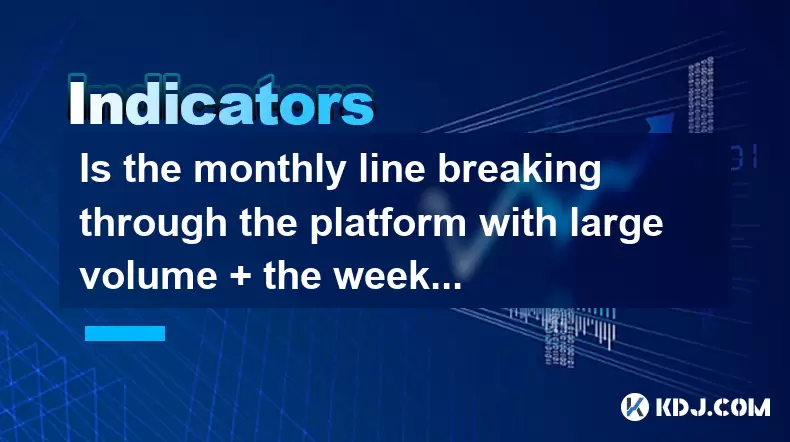
Understanding Monthly Line Breakouts in Cryptocurrency
In the world of cryptocurrency trading, monthly line breakouts are significant events that can indicate long-term trends. When a cryptocurrency's price breaks above a key platform or consolidation zone on the monthly chart, especially with large volume, it often signals strong institutional or whale buying activity. This kind of breakout is considered more reliable than short-term ones because it filters out noise and reflects broader market sentiment.
A platform in this context refers to a horizontal price range where the asset has traded for an extended period without making a clear directional move. A breakout occurs when the price moves decisively beyond this range. The volume during such a breakout is crucial — high volume confirms that the move isn't just a false spike but rather supported by real demand.
High-volume monthly breakouts are particularly important in crypto markets due to their volatility and speculative nature.
Interpreting Weekly Moving Average Convergence and Divergence
On the weekly chart, the behavior of moving averages plays a critical role in confirming trend changes. When moving averages like the 10-week and 50-week EMA (Exponential Moving Average) start to converge, it suggests that momentum is slowing down. This often happens after prolonged uptrends or downtrends and may signal a potential reversal or pause.
However, once these moving averages begin to diverge again, especially with the shorter one crossing above the longer one, it indicates a renewed bullish bias. This divergence should ideally occur alongside increasing volume and positive candlestick patterns to be considered a valid signal.
- Convergence implies indecision or consolidation.
- Divergence implies strength returning to the trend.
The key here is not just observing the convergence or divergence itself but understanding its timing and how it aligns with other technical indicators like RSI, MACD, and volume.
Combining Monthly and Weekly Signals for Confirmation
When both the monthly and weekly charts align in terms of direction and strength, the probability of a sustained move increases significantly. A bullish monthly breakout combined with a bullish weekly moving average divergence creates a powerful confluence of signals.
This scenario typically unfolds in stages:
- First, the asset consolidates over several months, forming a well-defined platform.
- Then, it breaks out with strong volume, indicating fresh inflows.
- On the weekly chart, moving averages flatten (converge), suggesting a temporary pause.
- Soon after, the shorter moving average begins to rise faster than the longer one, creating a bullish divergence.
Traders who recognize this pattern early can position themselves for what could be a substantial rally, especially if fundamentals or macro conditions support the move.
Volume Analysis: Why It Matters in Breakouts
Volume is the lifeblood of any breakout. In crypto markets, which are prone to manipulation and fake spikes, volume validation becomes even more critical. A true breakout must be accompanied by a surge in volume that is significantly higher than the average.
For example, if Bitcoin breaks above $70,000 on the monthly chart with daily volume spiking to $50 billion from an average of $20 billion, that’s a strong confirmation. Conversely, a breakout with low volume might be a trap set by large players to lure retail traders into weak hands.
Key points to consider:
- Volume should increase sharply at the moment of breakout.
- Sustained volume in the days following the breakout reinforces credibility.
- Watch for divergences between price and volume — rising prices with falling volume are suspicious.
Volume acts as the fuel that sustains price action, especially in digital assets where liquidity varies across exchanges.
How to Identify and Trade This Setup
To effectively trade this setup, follow these steps:
- Step 1: Identify a clear platform on the monthly chart. Look for multiple touches, tight price action, and no decisive breakouts in either direction.
- Step 2: Monitor volume as the price approaches and eventually breaks through the resistance level. Use tools like OBV (On-Balance Volume) or VWAP (Volume Weighted Average Price) for deeper insights.
- Step 3: Switch to the weekly chart and plot the 10-week and 50-week EMAs. Observe whether they have recently converged and started to diverge again.
- Step 4: Confirm divergence by checking if the shorter EMA crosses above the longer one. Also, look for bullish crossovers in MACD or RSI turning up from oversold territory.
- Step 5: Enter a position with a stop below the breakout level. Adjust your position size based on risk tolerance and use trailing stops to protect profits as the trend develops.
It's also wise to cross-reference news, on-chain metrics, and broader macroeconomic data before committing capital.
Frequently Asked Questions
Q: Can this strategy work on altcoins?
Yes, this strategy is applicable to altcoins, but you must ensure sufficient historical data and consistent volume. Major altcoins like Ethereum, Solana, and Cardano tend to exhibit clearer patterns compared to smaller-cap tokens.
Q: What time frame should I use for entry after the breakout?
You can enter on the monthly close above the platform or wait for a retest on the weekly or daily chart. Waiting for a retest often provides better risk-reward ratios.
Q: How do I differentiate between a real breakout and a false one?
False breakouts often lack volume, fail to hold above the level, or reverse quickly. Real breakouts show sustained volume, follow-through candles, and alignment with other indicators like moving averages.
Q: Should I use leverage when trading this setup?
Leverage should be used cautiously. Given the long-term nature of monthly setups, excessive leverage can lead to forced liquidations during normal pullbacks. Conservative leverage or spot trading is recommended.
Disclaimer:info@kdj.com
The information provided is not trading advice. kdj.com does not assume any responsibility for any investments made based on the information provided in this article. Cryptocurrencies are highly volatile and it is highly recommended that you invest with caution after thorough research!
If you believe that the content used on this website infringes your copyright, please contact us immediately (info@kdj.com) and we will delete it promptly.
- BTCBULL: Riding Bitcoin's Bull Run to Crypto Glory
- 2025-07-01 20:30:11
- Bitcoin's July Jolt: Will We See a New ATH?
- 2025-07-01 20:30:11
- Bitcoin Cash Price Surges to 8-Month High: Is $1,700 Next?
- 2025-07-01 20:35:12
- Solana, Pepe Coin, Crypto Meme Mania: What's Hot and What's Not?
- 2025-07-01 19:10:12
- Bitcoin Cash Price Pump: Unpacking the Reasons Behind the Surge
- 2025-07-01 18:30:12
- Dogecoin's Wild Ride: Rally Potential Amidst Investor Panic?
- 2025-07-01 19:10:12
Related knowledge
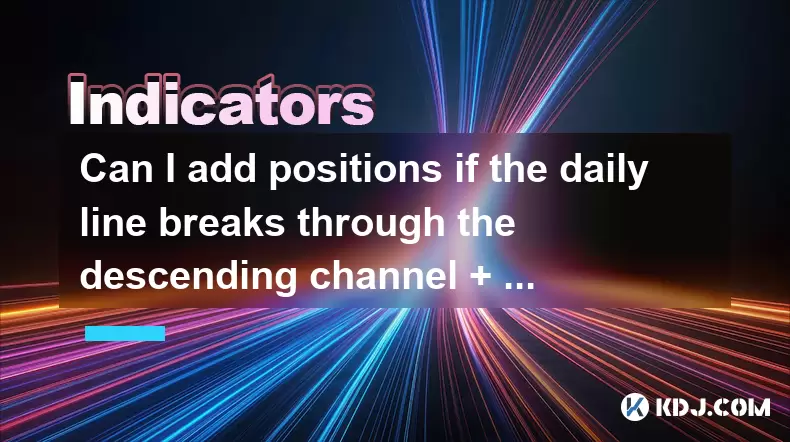
Can I add positions if the daily line breaks through the descending channel + the 30-minute moving average is in a bullish arrangement?
Jun 30,2025 at 11:00pm
Understanding the Descending Channel BreakoutWhen a daily line breaks through a descending channel, it indicates a potential shift in market sentiment from bearish to bullish. A descending channel is formed by drawing two parallel trendlines, where the upper trendline connects the lower highs and the lower trendline connects the lower lows. A breakout o...
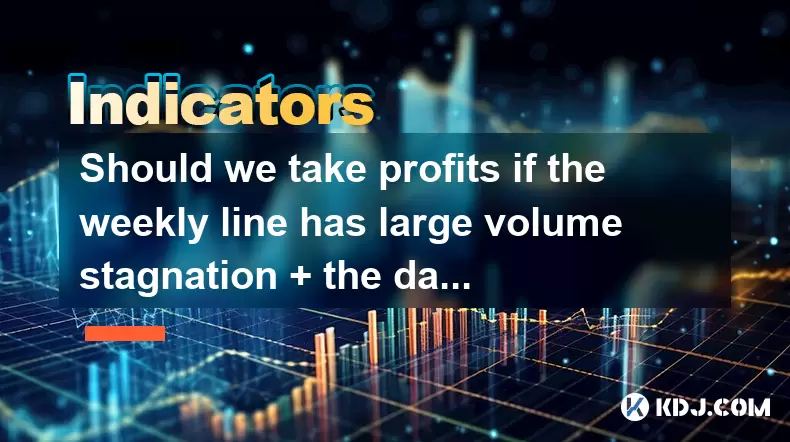
Should we take profits if the weekly line has large volume stagnation + the daily RSI top divergence?
Jul 01,2025 at 05:22pm
Understanding Weekly Volume Stagnation in Cryptocurrency TradingIn cryptocurrency trading, weekly volume stagnation refers to a situation where the total trading volume over a week remains relatively flat or shows no significant increase despite price movements. This phenomenon can indicate that institutional or large traders are not actively participat...
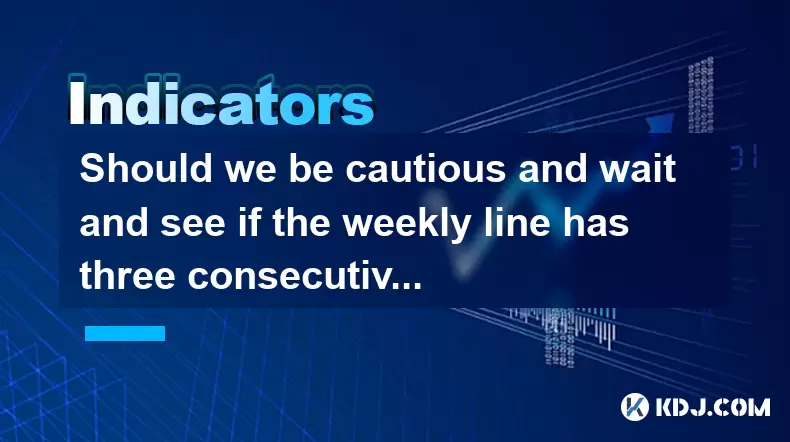
Should we be cautious and wait and see if the weekly line has three consecutive Yin lines + the daily MACD green column enlarges?
Jul 01,2025 at 12:42am
Understanding the Weekly Three Consecutive Yin Lines PatternIn technical analysis, three consecutive Yin lines on a weekly chart indicate a strong bearish trend. Each Yin line represents a week where the closing price is lower than the opening price, signaling consistent selling pressure. When this pattern appears three times in succession, it often sug...

Is the monthly line breaking through the platform with large volume + the weekly moving average converging and then diverging and bullish?
Jul 01,2025 at 05:01pm
Understanding Monthly Line Breakouts in CryptocurrencyIn the world of cryptocurrency trading, monthly line breakouts are significant events that can indicate long-term trends. When a cryptocurrency's price breaks above a key platform or consolidation zone on the monthly chart, especially with large volume, it often signals strong institutional or whale ...
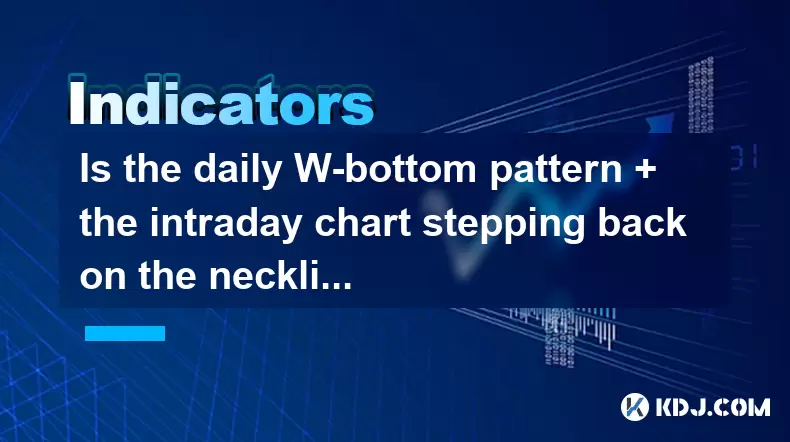
Is the daily W-bottom pattern + the intraday chart stepping back on the neckline a buying point?
Jul 01,2025 at 03:22pm
Understanding the W-Bottom Pattern in Cryptocurrency TradingIn technical analysis, the W-bottom pattern is a popular reversal chart formation that signals a potential bullish trend. It typically appears after a downtrend and consists of two distinct lows (the 'W' shape) with a resistance level (neckline) connecting the two peaks. In the context of crypt...
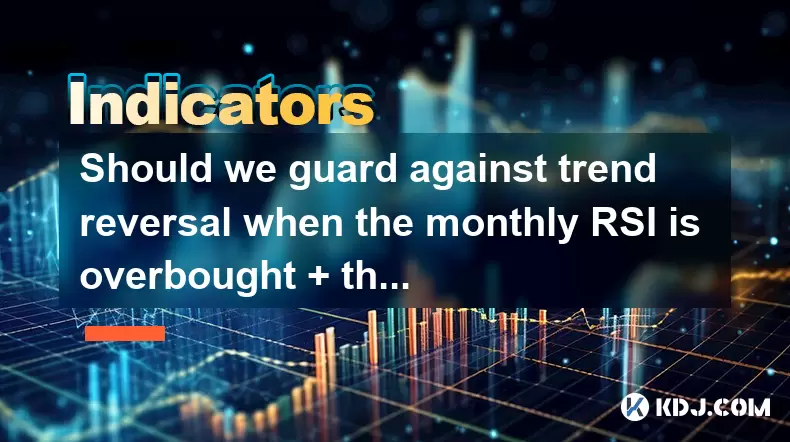
Should we guard against trend reversal when the monthly RSI is overbought + the weekly line has a long upper shadow?
Jun 30,2025 at 11:35pm
Understanding RSI Overbought Conditions in CryptocurrencyThe Relative Strength Index (RSI) is a momentum oscillator commonly used in technical analysis to identify overbought or oversold conditions in an asset. When the monthly RSI of a cryptocurrency reaches above 70, it is generally considered overbought, suggesting that the asset may be due for a pul...

Can I add positions if the daily line breaks through the descending channel + the 30-minute moving average is in a bullish arrangement?
Jun 30,2025 at 11:00pm
Understanding the Descending Channel BreakoutWhen a daily line breaks through a descending channel, it indicates a potential shift in market sentiment from bearish to bullish. A descending channel is formed by drawing two parallel trendlines, where the upper trendline connects the lower highs and the lower trendline connects the lower lows. A breakout o...

Should we take profits if the weekly line has large volume stagnation + the daily RSI top divergence?
Jul 01,2025 at 05:22pm
Understanding Weekly Volume Stagnation in Cryptocurrency TradingIn cryptocurrency trading, weekly volume stagnation refers to a situation where the total trading volume over a week remains relatively flat or shows no significant increase despite price movements. This phenomenon can indicate that institutional or large traders are not actively participat...

Should we be cautious and wait and see if the weekly line has three consecutive Yin lines + the daily MACD green column enlarges?
Jul 01,2025 at 12:42am
Understanding the Weekly Three Consecutive Yin Lines PatternIn technical analysis, three consecutive Yin lines on a weekly chart indicate a strong bearish trend. Each Yin line represents a week where the closing price is lower than the opening price, signaling consistent selling pressure. When this pattern appears three times in succession, it often sug...

Is the monthly line breaking through the platform with large volume + the weekly moving average converging and then diverging and bullish?
Jul 01,2025 at 05:01pm
Understanding Monthly Line Breakouts in CryptocurrencyIn the world of cryptocurrency trading, monthly line breakouts are significant events that can indicate long-term trends. When a cryptocurrency's price breaks above a key platform or consolidation zone on the monthly chart, especially with large volume, it often signals strong institutional or whale ...

Is the daily W-bottom pattern + the intraday chart stepping back on the neckline a buying point?
Jul 01,2025 at 03:22pm
Understanding the W-Bottom Pattern in Cryptocurrency TradingIn technical analysis, the W-bottom pattern is a popular reversal chart formation that signals a potential bullish trend. It typically appears after a downtrend and consists of two distinct lows (the 'W' shape) with a resistance level (neckline) connecting the two peaks. In the context of crypt...

Should we guard against trend reversal when the monthly RSI is overbought + the weekly line has a long upper shadow?
Jun 30,2025 at 11:35pm
Understanding RSI Overbought Conditions in CryptocurrencyThe Relative Strength Index (RSI) is a momentum oscillator commonly used in technical analysis to identify overbought or oversold conditions in an asset. When the monthly RSI of a cryptocurrency reaches above 70, it is generally considered overbought, suggesting that the asset may be due for a pul...
See all articles

























































































